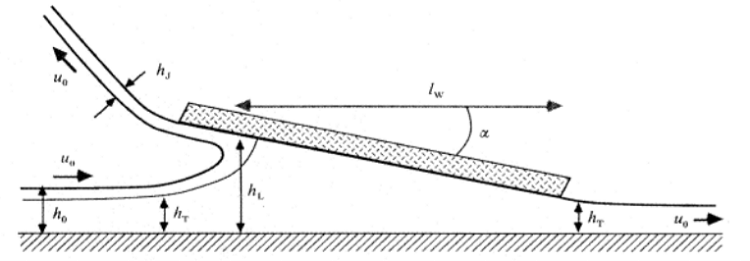
When it comes to recreational water sports, simulation can make a dramatic difference in performance. Skimboards are a perfect example of this. These short, thin boards are similar to surfboards without fins and they allow riders to float on the water’s surface and glide. In order to improve the design of the board, one group of researchers relied on hydrodynamics to understand the interaction between water and skimboards.
Hydrodynamics Drives Skimboard Modeling
At the COMSOL Conference in 2009, researchers from General Dynamics presented their paper on “A Study of Planning Hydrodynamics“. Using COMSOL Multiphysics and the CFD Module, they were able to investigate the movement of the water flow (hydrodynamics) under a skimboard. The team tested different boundary conditions and received important insight into the physics of skimboards. They solved their hydrodynamics problem with simulation and determined which set of boundary conditions agreed best with available simplified analytical solutions and experimental data.
For the purposes of simulation, the skimboard is assumed to be standing over a water layer that moves from left to right, and producing a jet at the leading edge spraying back toward the left. The skimboard has an angle of attack, α, as small as possible to generate enough lift and reduce drag. The geometry analyzed and main parameters used by the researchers are shown in the schematic below where the “piling up” and spraying back of the flow upstream is taken into account. The skimboard design was set up as a planing surface with a set length, lw, on the water, and the water is set to have an original depth, h0.
The hydrodynamics of the skimboard depicted in the schematic below have been investigated by solving the Navier-Stokes equations. A 3D solution is computationally expensive, so the researchers decided to solve them in 2D in order to be able to quickly test their ideas.

Schematic representation of the planing of a skimboard over a thin water layer used to develop the model in COMSOL Multiphysics. Image courtesy of Nathaniel D. Barnett and Ernesto Gutierrez-Miravete.
Best Result with the Best Boundary Conditions
The three cases studied considered differed boundary conditions:
- Case 1: With a fixed bottom boundary of the water layer, the board was made to move tangentially along the angle of attack. The boundary conditions for this case were set up like a moving conveyor belt.
- Case 2: The skimboard (the upper boundary) was fixed and an entrance velocity was introduced. The lower boundary moved with the same velocity as the incoming fluid in order to maintain the relative velocities of the solid objects.
- Case 3: The board moved as a rigid body at a constant velocity along the negative x-direction.
Case 3 best demonstrated that the lift generated by the computational methods was in good agreement with the lift values that were noted in the previous theoretical studies and experiments. Creating several case studies is the perfect way to use simulation to explore different ideas and understand more about the problem at hand.
Check out the full scope of their hydrodynamics simulation by downloading their paper and presentation, listed below.
Further Reading
- Read the paper: “A Study of Planning Hydrodynamics“
- View the presentation, delivered at the COMSOL Conference 2009



Comments (0)